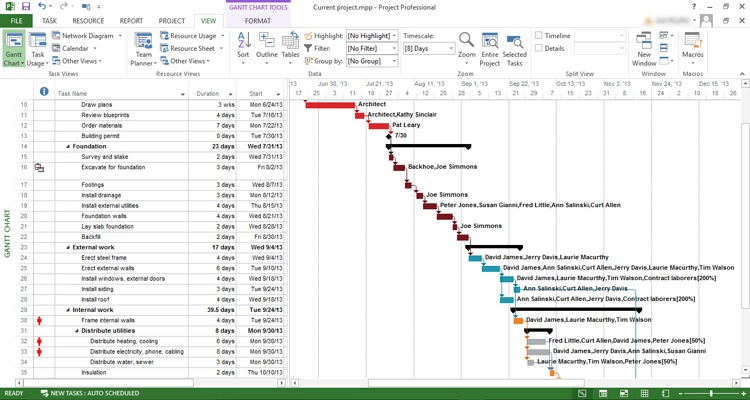

Task is scheduled to finish on or after a specified date. Task is scheduled to start on or after a specified date. Do not enter a start or finish date with this constraint. Default constraint when you schedule from the project start date. Task is scheduled to begin as early as possible. Do not enter a task start or finish date with this constraint. Default constraint when you schedule from the project finish date. Task is scheduled as late as possible with the task ending before the project ends and without delaying subsequent tasks. When MS Project 2013 performs calculations to save you time in a project that’s running late, constraint settings are enforced. So, no fixed start or end dates are imposed by this constraint type, but of course predecessor and successor dependencies are maintained. As Soon As Possible means the task starts as soon as the project starts, if there are no dependencies that would delay it. Apply Task ConstraintsĮach task created in MS Project 2013 will be constrained as “As Soon As Possible” by default when Automatic Scheduling is turned ON. Lag is entered as positive units and lead in negative units (example,-3d or -50%). If you enter 50% for the selected Task which is 6 days long, the task is delayed by 3 days after the predecessor ends. You can also apply lag or lead as a percentage. Under Lag heading column, enter the lag in terms of hours, days, weeks, or years. Lag − Lag time causes successor task to start after its predecessor task ends.Ĭlick Task Tab → double-click the required Task under Task Name column →

Lead − Lead time causes successor task to begin before its predecessor tasks ends. Task Information dialog box opens → Predecessors Tab.Ĭlick the box under the Type column and choose the relationship according to your requirement.īy default when you link tasks they are assigned a “Finish to Start” relationship.

Least used.Ĭlick Task Tab → double-click the required task under Task Name column → Start to Finish (SF) − Exam preparation will end when exam begins.

One does not have to finish collecting survey responses before starting the tabulation. Start to Start (SS) − When doing a survey, we would seek survey responses but will also start tabulating the responses. Most used.įinish to Finish (FF) − Cooking all the dishes for dinner to finish on time. There are four types of task dependencies.įinish to Start (FS) − Finish the first floor before starting to build the second floor.


 0 kommentar(er)
0 kommentar(er)
